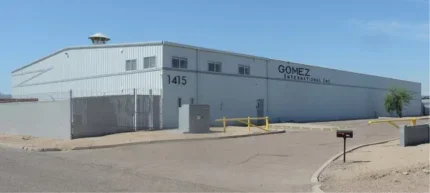
Gomez International, Inc., originally Gomez Tunneling Systems International, started in 1991 working out of our home, with only two employees, Rick and Renetta Gomez, husband and wife, working together. Renetta handled all the finances, billing, proposals, invoices and day to day operations, with Rick working in the field on jobsites for various clients throughout the US and around the world. To accompany Rick and help when needed, Renetta received certification from the Arizona State Board of Education and home-schooled their three children, Vinesa, Michelle and James, who traveled with them. We all worked together when needed to help with projects, from entering data from a PLC to building wiring harnesses.
When we first started, most of the invoicing and communication was still being done by US mail. Now almost everything is done digitally via email, with electronically signed contracts, drawings uploaded for live evaluation and changes, invoicing, payments, submitted online, all making it easier to instantly communicate.
In 1997 we moved to a larger home on 5 acres, allowing us room to purchase and refurbish equipment from projects that had been completed. In 1999 our son James joined the company full time, helping with all of the equipment rebuilds.
GROWTH
In 2005 we incorporated, and the company name was changed to Gomez International, Inc. Renetta became the President and CEO, and Rick is the Vice-President and COO.
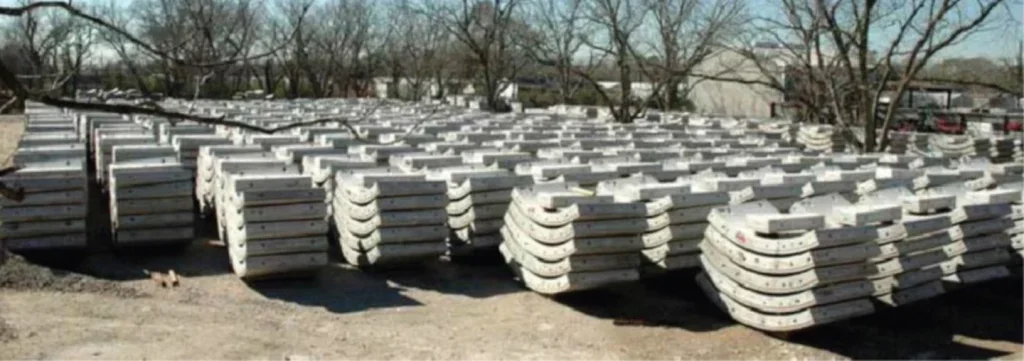
With the workload continuing to increase, in 2010 we hired Asao Nomura as our Vice-President of Engineering. Asao assists with equipment design, on-site consulting and engineering services.
By 2011 our equipment rebuilds, and manufacturing had grown requiring more space. We purchased our Manufacturing and Rebuild facility, located in Phoenix, Arizona, consisting of a 20,000 sq ft building on 3 acres and includes a full machine shop. James oversees the manufacturing division and shop personnel and was promoted to the companies Vice-President of Operations.
As the tunnelling industry continued to change, we found there was a need for new innovative equipment and materials. In 2012 we took a trip to Japan and partnered with several Japanese manufacturers to provide products and equipment for US tunnelling projects. Asao is our liaison to our Japanese manufacturing partners and offers advice on design, and making sure the equipment meets our customer’s needs. When attending conferences, and when needed, we invite our partners to attend so our customers can receive firsthand advice and knowledge regarding any equipment we can offer.
In 2018 Gomez International, Inc. became certified as a Woman Business Enterprise (WBE) and Woman Owned Small Business Enterprise (WOSB).
Our staff has over 118 years of combined experience in the tunnelling, construction, and mining industries. Specialising in heavy civil, bridge, power, mining and tunnelling projects and equipment manufacturing, rebuild and supply, Gomez International is positioned to support all aspects of customer projects, from large public infrastructure to small private projects.
Clients include owners, contractors, engineers, consultants, manufacturers, and suppliers to whom the range of services can include engineering, consulting, estimating, project field support, design, equipment manufacturing, sales, equipment rebuilds, and material supply.
With the continued expansion of our business, the range of equipment and services can include, for example: complete diesel engine and equipment re-builds; high voltage switch gear; mine power transformers; high voltage cable assemblies; ventilation fans; equipment/workshop Conex; tunnel excavators; conveyor systems; tunnel seals; peristaltic and submersible and slurry pumps; grout and bentonite mixing plants; rolling stock (tunnel locos, man cars, liftoff muck boxes, segment handlers).
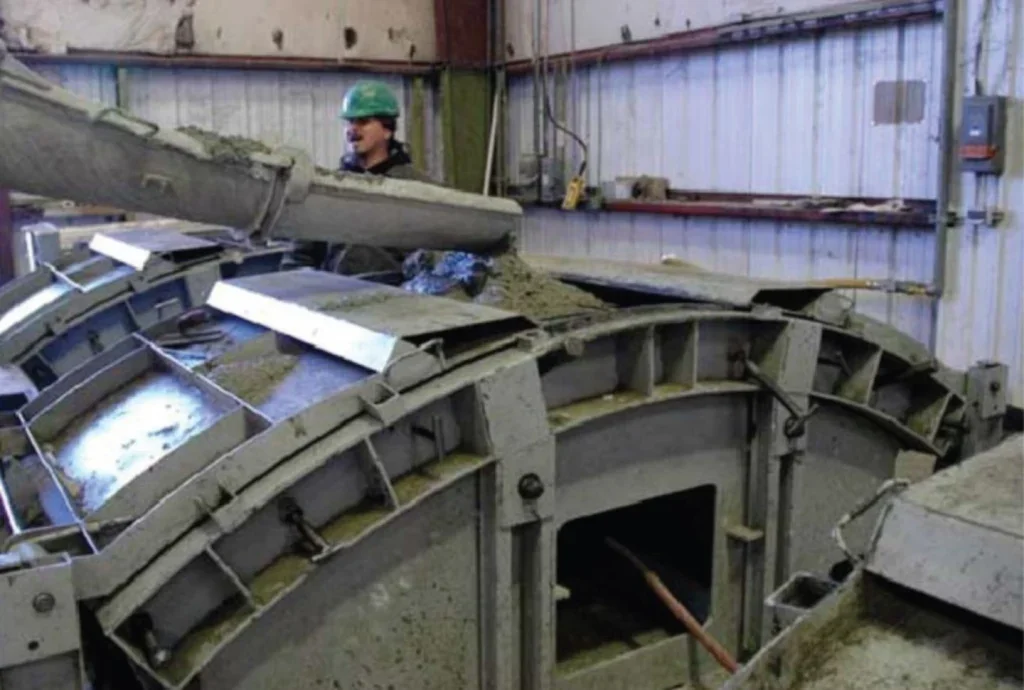
In 2022 we entered a partnership with a Japanese manufacturer for the new design of a tunnel boring machine (TBM) tail seal. This design was co-patented by Gomez International and Showa Kogyo, and is to reduce the grease required for lubrication on the tail brushes, and to reduce the need for frequent tail brush replacement. It is hoped that, with additional testing, this will become a new standard utilised on TBMs.
The business is also the North, Central and South American Sales and Service Representative for several innovative manufacturers.
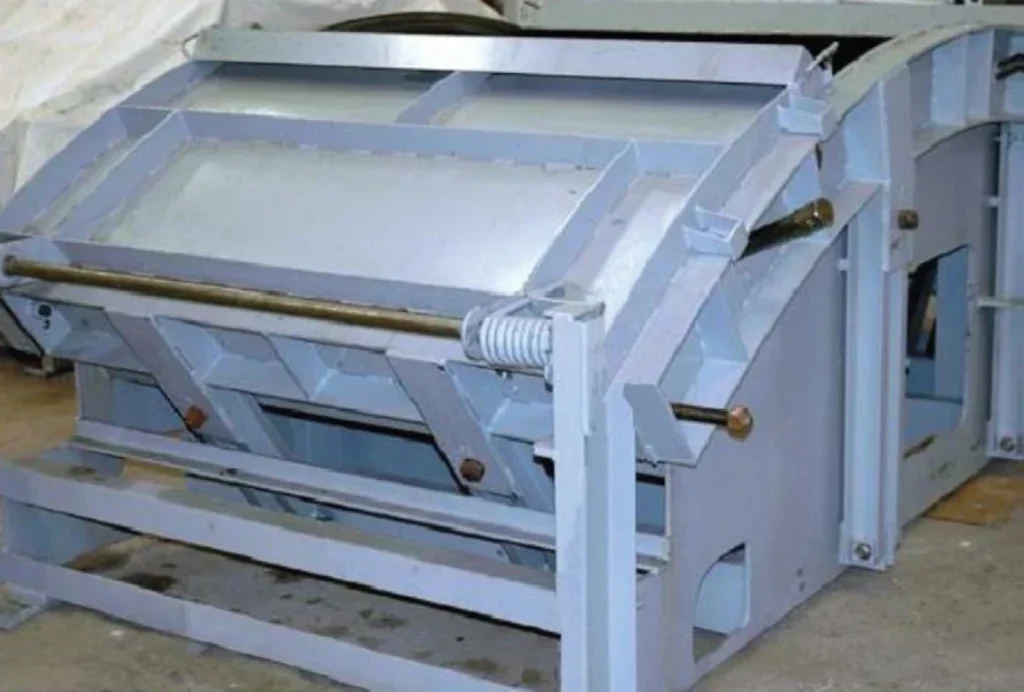
TRENDS
We’ve seen the following trends over the last few decades:
Larger Diameter TBMs:
Diameters of TBMs have increased significantly in recent years. An example is in the US, the SR99 57.5-ft diameter Earth Pressure Balance (EPB) shield, in Seattle. We had the privilege of working with the TBM manufacturer Hitachi Zosen to coordinate the refurbishment and operations maintenance of the machine until the project’s successful completion.
Mechanical Excavation and Ground Support Methods:
When we first started in the tunnelling industry there were primarily only hard rock gripper TBMs, and digger shields which pushed off ribs and boards or junk precast segments, along with cutterhead shields with face doors and a muck ring, limiting the flow of muck into the shield. A series of wells and pumps were installed along the tunnel alignment to control water seepage during and following tunnelling. These shield excavated tunnels typically supported the ground with a layer of filter cloth installed to trap sediment, thereby limiting water flow between the ribs and boards. When initial boring was completed, a rebar reinforced cast concrete lining was poured insitu around the entire length and circumference of the tunnel, encapsulating the initial ground support, installed after tunnelling was completed.
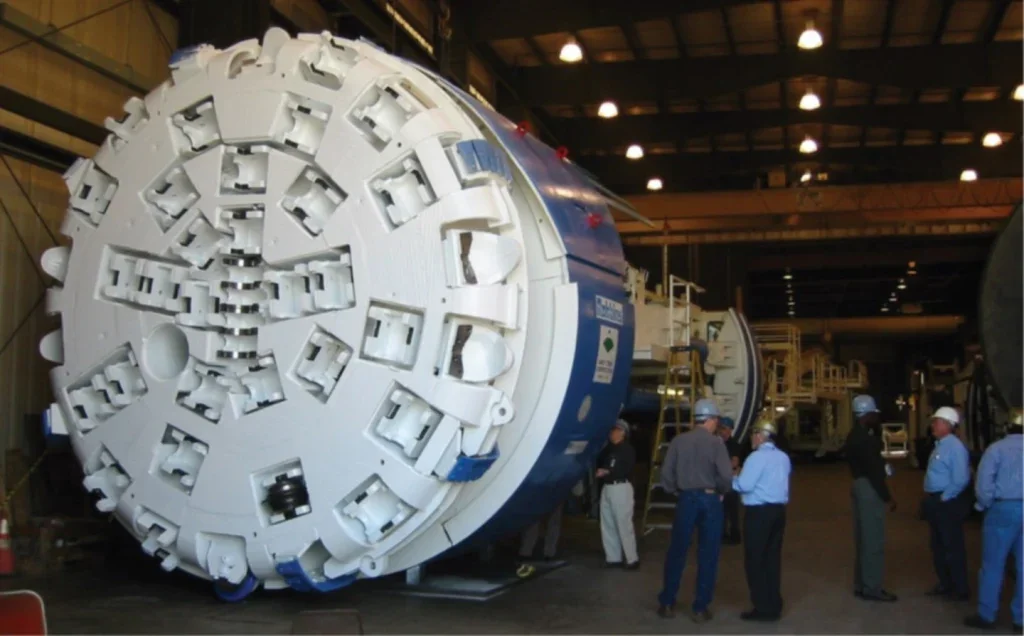
The development of both EPB and slurry shields has allowed the excavation of tunnels through permeable soils, along with geological conditions where rock is unstable. The further development of precision, gasketed, and bolted precast concrete segmental lining has allowed tunnels to be bored with vertical, horizontal, and compound curves with greater depths and at with higher water pressures, allowing personnel to work at atmospheric pressures within the tunnel. The changing of cutting tools and scrapers, and maintenance to the cutting head requires a hyperbaric intervention that can be performed safely in most cases.
Hard rock TBMs, otherwise known as high performance TBMs, can only advance as fast as the muck can be extracted from the cutterhead face, and the cutterhead can rotate without throwing muck against the opposite tunnel wall. Re-grip time is also required between each setup for the next advance of the TBM.
With the utilisation of tunnel Entrance and Exit seals, tunnels can now be more readily used in environments where water infiltration once prevented this type of excavation. These seals are available through Mutsubishi Rubber, one of our manufacturing partners in Japan. They have been successfully installed on many tunnel projects throughout the US and Canada and are widely used in other countries.
Precast Segmental Lining:
When a precision precast concrete segmental lining is installed, the ring is assembled within the ‘tail can’ and the shielded TBM thrust cylinders are used to push against the concrete ring. As the shield advances the lining remains in the fixed position with a gap between the cutterhead overcut and the ring. This gap is filled with a cementitious grout which is flashed with a chemical additive to immediately set and secure the ring in place.
A typical subway size tunnel +/- 32ft-diameter with 6ft-wide rings requires +/- 6 yd3 of grout to be injected into the gap for every ring. We have seen the grout types change from a sanded grout to a simple four-component grout consisting of cement, fly-ash, bentonite, and water. These grout plants are available through another of our Japanese partners, Sagami- Servo, who also manufactures peristaltic pumps.
The custom batching systems allow the grout to be delivered in bulk rail cars and/or pumped through a pipeline along the length of the tunnel. Chemical agents are introduced during the batching/mixing process, which retard the grout from setting. From storage tanks mounted on the TBM trailing floor the grout is either pumped directly into ports cast into the lining segments, and/or special grout injection ports built into the tail can. As the grout is pumped into the annulus, a chemical agent (e.g. sodium silicate) is immediately injected into the grout so that it will flash and solidify as it fills the segment lining gap. These additives, allowing for the grout to solidify didn’t used to be available, making the grouting process more difficult. The sanded grout, that used to be used, would solidify in the lines.
Operator controls, display screens, interactive operation:
We have had the opportunity to work with TBMs that relied on relay logic for the controls and required the operator to manually push buttons, activate levers, and open and close hydraulic valves that were adjacent to the control console. Instrumentation was limited to analogue (needle with a scale e.g., 2-200 amp) type meters for motor amperage, fluid flow, pressure gauges, and flow meters. If there was an electrical or mechanical failure it could take hours, days, and in some cases weeks or more to identify the problem.
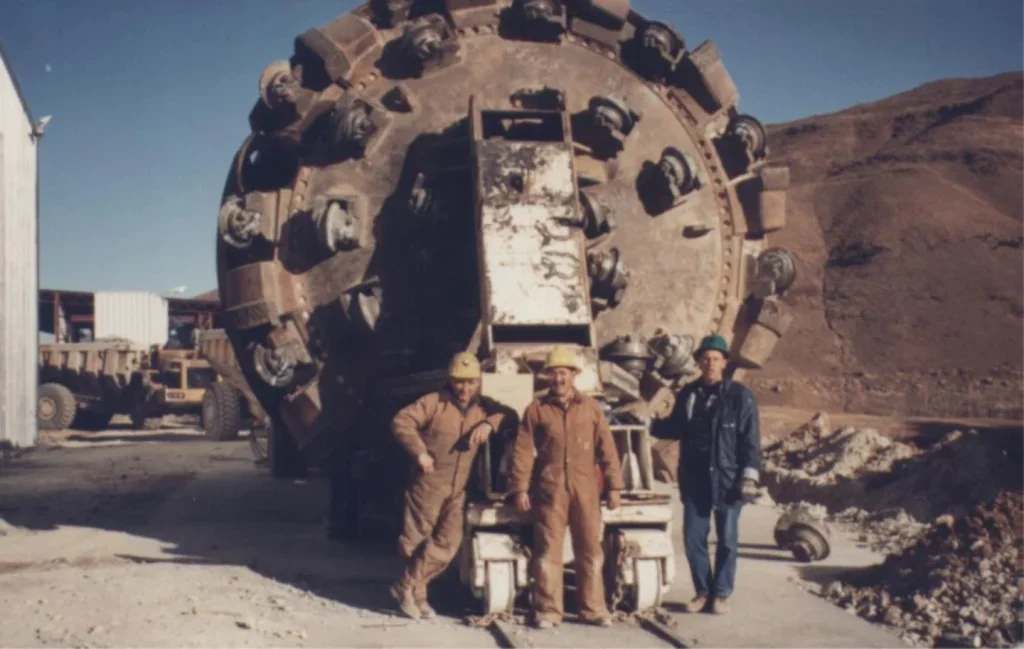
The systems now incorporate process logic controller (PLC) which has replaced relay logic. This can allow for all the input data from the devices described above to be input and output to start and stop all the motors and systems on the TBM simultaneously. This information is now displayed on touch screens with graphs showing all the machine functions and the operators have the ability to have safety interlocks pre-programmed to warn the operator of an issue or shut down the TBMs system to prevent damage or injuries to personnel.
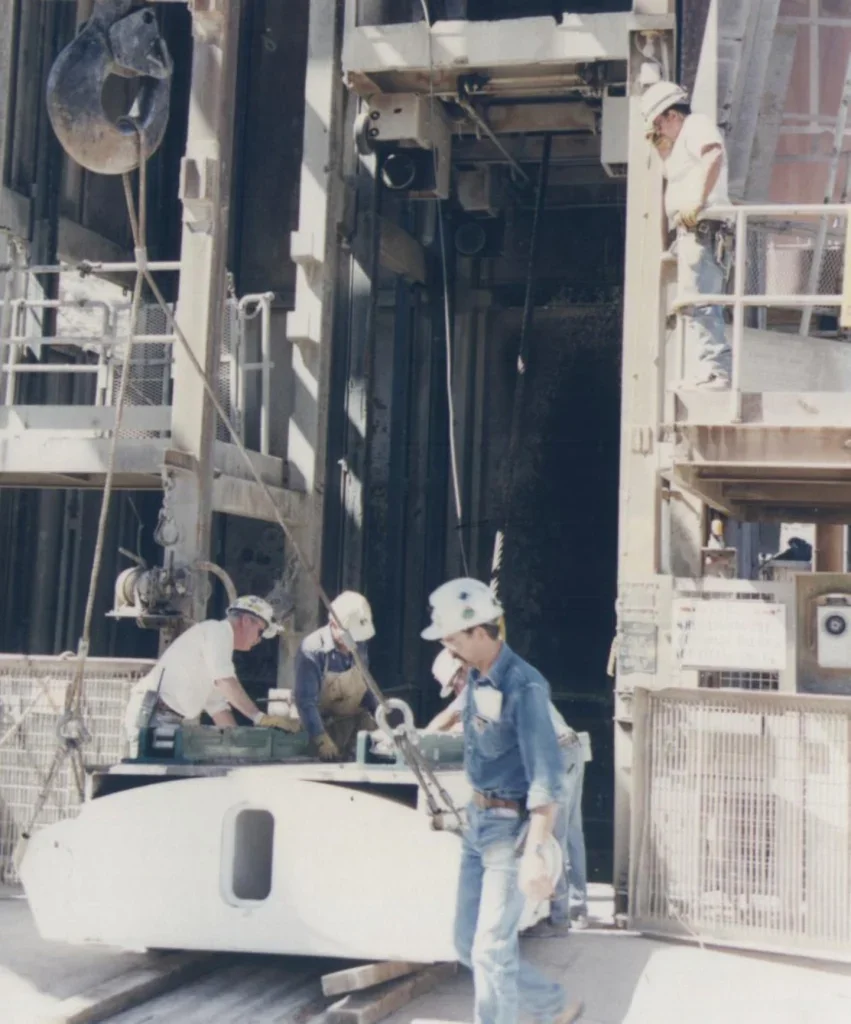
These systems allow for data-logging at preprogrammed intervals which can be downloaded into programs allowing the data to be retrieved and analysed, such as cutterhead drive motor torque, current, rpm, duration to bore ring, thrust pressure for each ring, cutterhead rpm, torque, direction CW, CCW, etc. The maintenance and troubleshooting when problems occur are enhanced as the PLC can be programmed to identify where the problem has occurred, e.g., hydraulic oil level is low, motor starter thermal overload is tripped, etc.
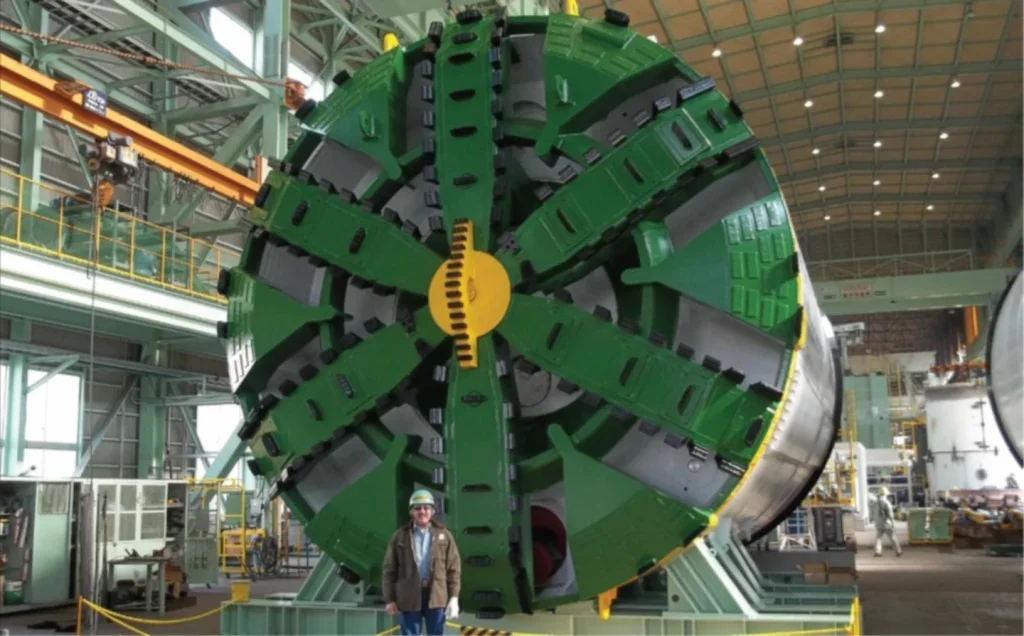
Cutter Head Drive Systems:
Early electric cutterhead drive motors utilised across the line motor starting, with clutches and/or soft starts, as the reliability and development of water-cooled Variable Frequency Drives, aka Inverters, have replaced the motor starter and soft starts.
Cutting Tools:
The cutter tool metallurgy has enhanced the life of both roller disc cutters, scraper bits and face cutters, rippers for hard rock, and soft ground geological formations. Prior to launching and boring of the Bay Tunnel project EPBM, the Hitachi Zosen cutterhead was dressed with Japanese-style shell bits. Along the 26,250 ft (5.25 mile)-long drive not a single shell bit cutting tool had to be changed. This also included boring through a section of serpentine rock.
We continue to supply tunnelling contractors with Japanese mono-block disc type cutters, disc cutters and shell type cutters with great results. The advancement of scientifically designed metals has greatly helped improve the strength the cutting tools required for tunnelling projects throughout the world.
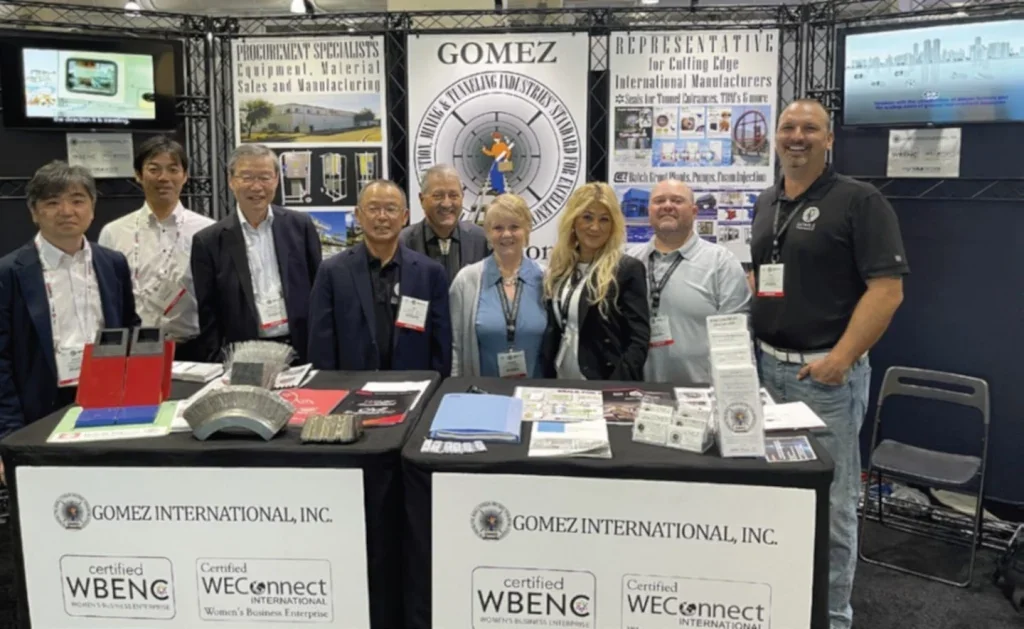
Ventilation Systems:
When we first started most of the tunnel ventilation systems utilised rolled steel duct of various diameters and lengths. The coupling connections in some cases were joined together with duct tape, and/or the connection sealed with stretchable rubber bands between 6-in and 12-in in width. The coupling changed to steel clamps locking the sections of steel duct together, which is still used today where negative pressure ventilation is mandated.
The introduction of fire-resistant bag type ducting enhanced the ventilation systems with less leakage, longer lengths between couplings that fed from a duct cassette magazine on the last trailing car. The next major enhancement was the use of variable frequency drives/inverters to start and stop the axial vane fans. The ability to both ramp the speed and control the maximum speed of the axial vane fan prevented the duct from blowing apart the steel duct sections and the tearing or ripping of the bag line type ducting.
Rubber tyre Haulage Systems:
Narrow gauge rail laid in the invert of the tunnel has been the predominate method for transporting personnel, materials, and supplies, along with the removal of muck from the TBM using diesel-powered locomotives, personnel cars, flat cars, grout cars and muck cars. The installation of portable switches allowed multiple trains to be utilised so that they could pass each other on longer tunnel alignments.
In 2013 we worked with a contractor to eliminate narrow gauge rail and switch to rubber tyre multiservice vehicles (MSVs). Twin 3.5 mile-long tunnels (totalling seven miles) had two massive stations that would allow the MSVs to pass. These trucks had cabs front and rear with the forward cab designed to lower and allow full rings of precast segments to be unloaded. The wheels and tires were canted, which prevented the trucks from climbing the side of the round tunnel. Special hangers were added under each of the main truck bodies to carry the utility pipe for installation as the tunnels advanced. A special personnel body was fabricated to transport personnel to and from the TBM. These units were only available as diesel-powered at that time but are now offered as battery-powered models.
Battery Powered Haulage Systems:
Narrow gauge rail is still utilised on many projects. The development of traction motors for subway and light rail systems has also been developed in batterypowered locomotives. On the recent Bay Tunnel project, Shin Tomoe battery-powered locomotives, available through Gomez, were utilised for the transportation of personnel, precast segments, rail and ties, along with materials and supplies. The batteries only required to be exchanged with fully charged batteries once a day, with the locomotives working three shifts.
The operation of the units was extremely simple with a forward, reverse, and stop from a single control lever. These units included a remote control that allowed the operator to move the train on and off the portable switch and transfer the train from track to track.
Laser Guidance Systems:
Our first TBM relied on two plex-glass targets with a grid pattern stencilled or etched into the Plexiglas. Placed on the forward most available clear space, on the front and back of the main beam, on a hard rock TBM the laser would be positioned on the tunnel wall by the surveyor and its beam directed through the plexiglass targets. The TBM operator would receive instructions for each advance how far the laser had to be in relationship to the grid, e.g., front target would have the laser in the middle of the grid, back target would be in the middle line two lines up from the center of the grid, thus steering the machine down.
Utilising a shield type TBM with a precast segmental lining was more difficult to survey. The grid targets changed to fully automated guidance systems, which had the entire tunnel alignment ring by ring programmed into its database. Single and/or multiple digital targets mounted within the shield provided much more accurate feedback data to the TBM operator. This information was displayed for the operator on interactive display screens at the control console. Total Station guidance systems with lasers that rotate periodically and look back at their previous position confirm the alignment of the tunnel. Prisms would be utilised with some systems to confirm the alignment through curves for vertical and horizontal curves along with compound curves. Their ability to interpret the TBM’s position in relationship to the tunnel segment ring installation is a huge benefit preventing the tunnel from being off line and grade, which is almost unheard of now.
Muck Removal Systems:
Muck car trains used to be the only means of removing the tunnel muck from TBM excavations. Now continuous conveyor belt systems and slurry pumping, and separation plants have replaced muck trains. The geological conditions dictate the utilisation of conveyor systems for EPBM and hard rock TBMs. Slurry transport systems pump the excavated muck out of the TBM slurry chamber to the surface where the cuttings, sand, and silt are separated from the bentonite slurry, which keeps the muck/cutting in suspension. Both systems require inline tripper/boosters for conveyors, and booster pumps for slurry systems.
Removal of muck from the tunnel shaft used to be predominantly achieved by using muck boxes, lifted from the shaft using cranes. Development of vertical conveyor systems has allowed for safer, cleaner removal of muck from the tunnel shaft. This allows for faster muck removal and requires fewer personnel. Gomez International has designed a vertical conveyor system that allows for the removal of all types of muck, from sand to wet, soupy and sticky muck. The units are manufactured to fit customer needs.
Material handlers with rotary clam buckets have replaced articulated loaders to load dump trucks. They limit muck spillage and track out, along with having super-elevated cabs allowing the operator to reach into ponds or bins and place the clam shell within the truck bed when loading with almost no splash out.
Shuttle conveyors, also available through Gomez International, is a system technology that allows the muck from multiple tunnel excavations to be stored in surface bins on long narrow project sites, allowing enough time to load trucks with the material handler and dispose without affecting the TBM advance rates.
CONCLUSION
Over the last 25 years we have found that by diversifying into different areas, we are better able to assist our customers to provide the services, equipment and material they need. We have now branched out to become a supplier for different branches of the US Government, highway departments, and other vendors.
The tunnelling industry has seen significant change over the last 25 years. Means and methods of operation have advanced in several areas from equipment design to computerised operations, GPS surveying, to using fiber optics for communication, and more. Projects now require more environmentally friendly materials to be used.
We expect to see more incremental changes and improvements to the equipment along with the means and methods.
I am very proud of the fact we work together as a team, in conjunction with all of our customers. When we’re hired for any type of work, consulting, engineering, material supply, equipment design and/or build, you get us all, working together to assist where we can.
You have to embrace change and always look for the new, up and coming techniques, materials, equipment, and methods of achieving success. You have to always be evolving.






